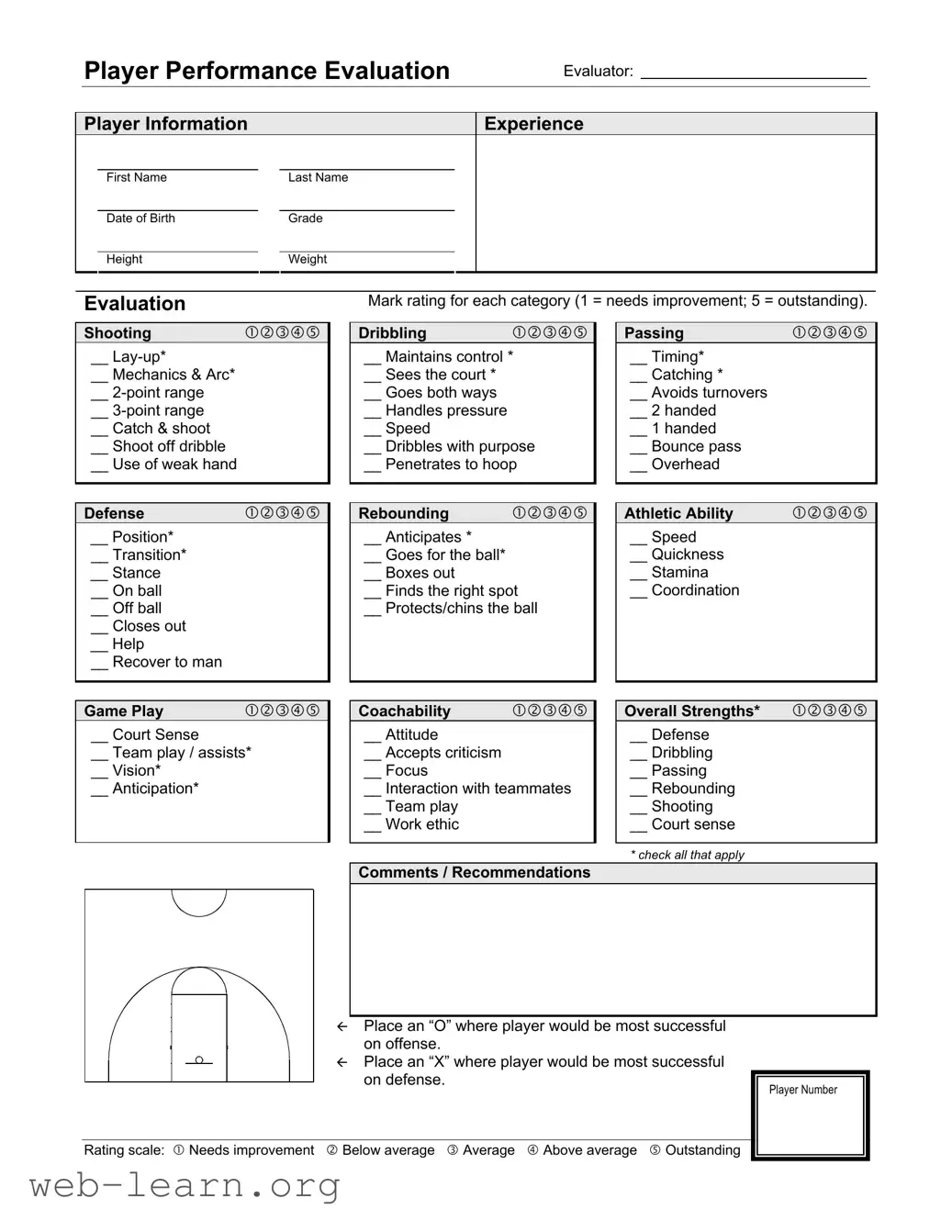Evaluating a basketball player's performance requires a thorough and systematic approach, and the Basketball Evaluation Form serves this purpose effectively. This comprehensive tool captures various aspects of a player's skills, enabling coaches and evaluators to assess performance accurately. Players fill out essential information such as their name, date of birth, grade, height, and weight at the start of the form. Following this, evaluators mark ratings across multiple categories—such as shooting, defense, dribbling, rebounding, passing, and overall athletic ability—on a scale from one to five, with one indicating a need for improvement and five denoting outstanding skills. Specific attributes, like shooting mechanics and on-ball defense, are scrutinized for a holistic view of a player's performance. Assessing game play captures critical elements, including court awareness and teamwork. Finally, evaluators can provide insight into a player's strengths, coachability, and overall contributions to the team, making the form a valuable resource for developing future basketball talent. Comment sections also allow for personalized recommendations and strategies, ensuring that each player receives focus tailored to their unique abilities.

